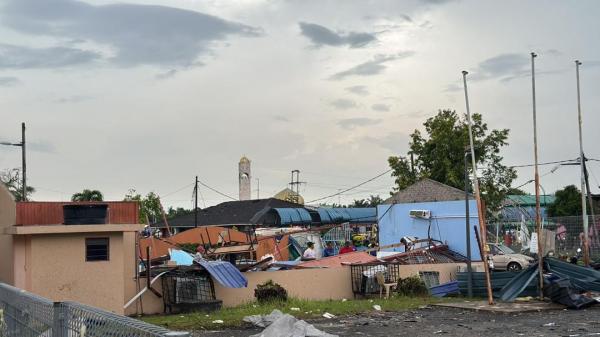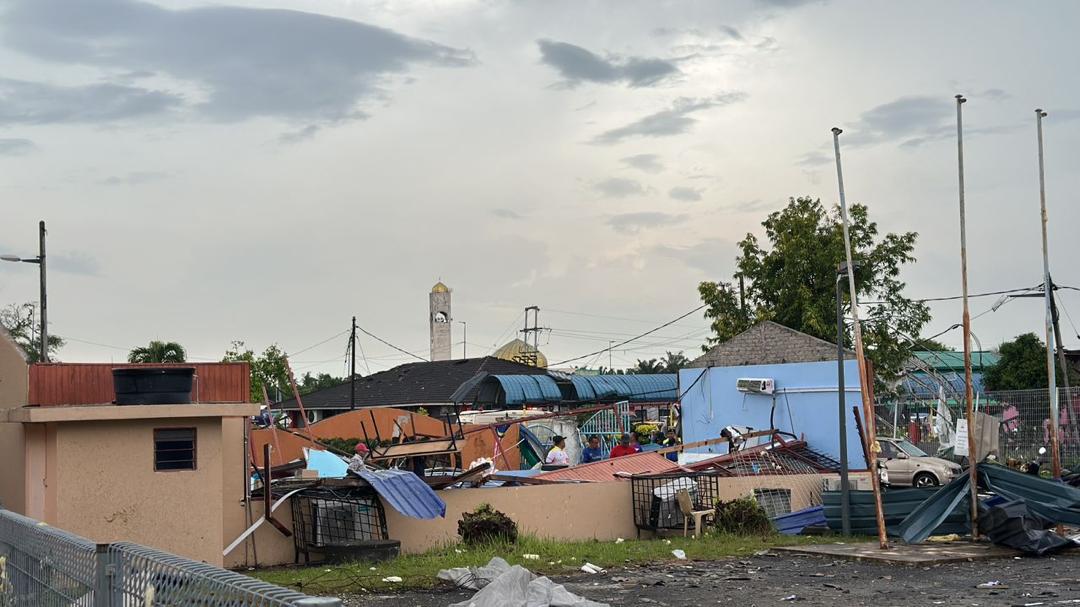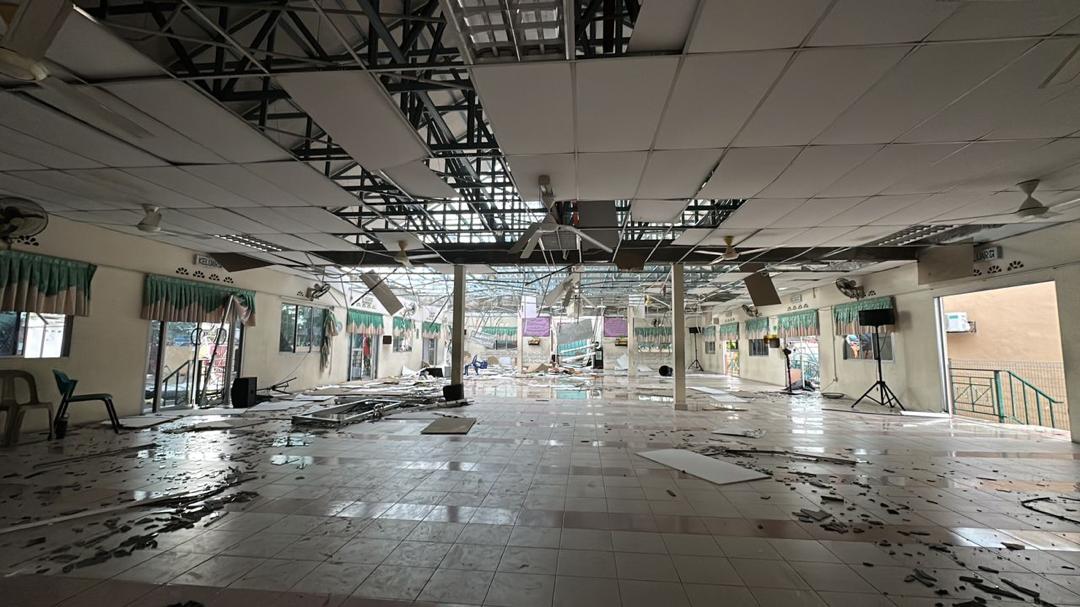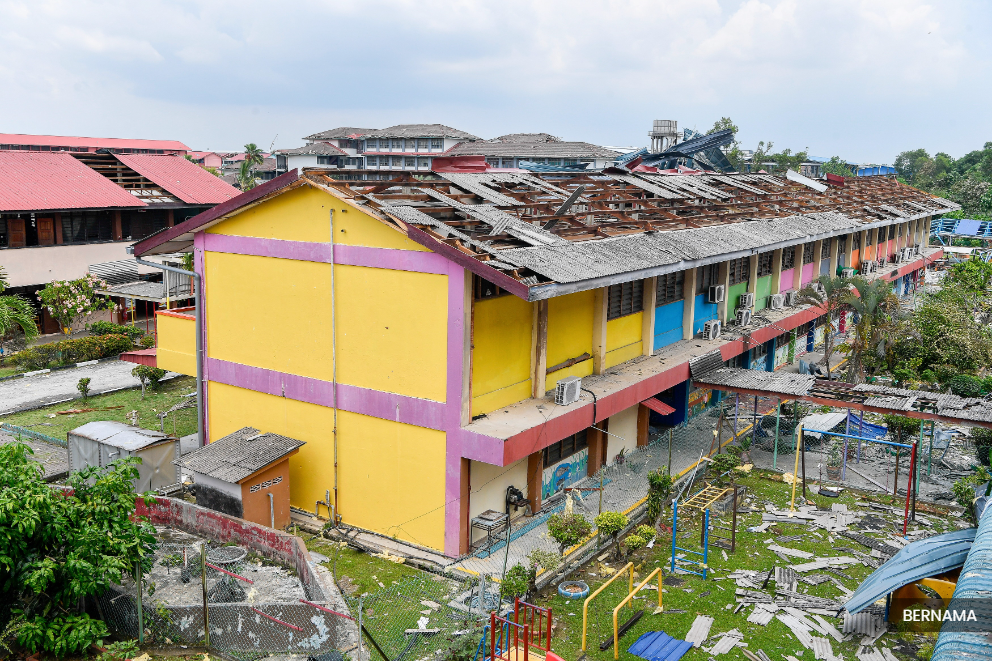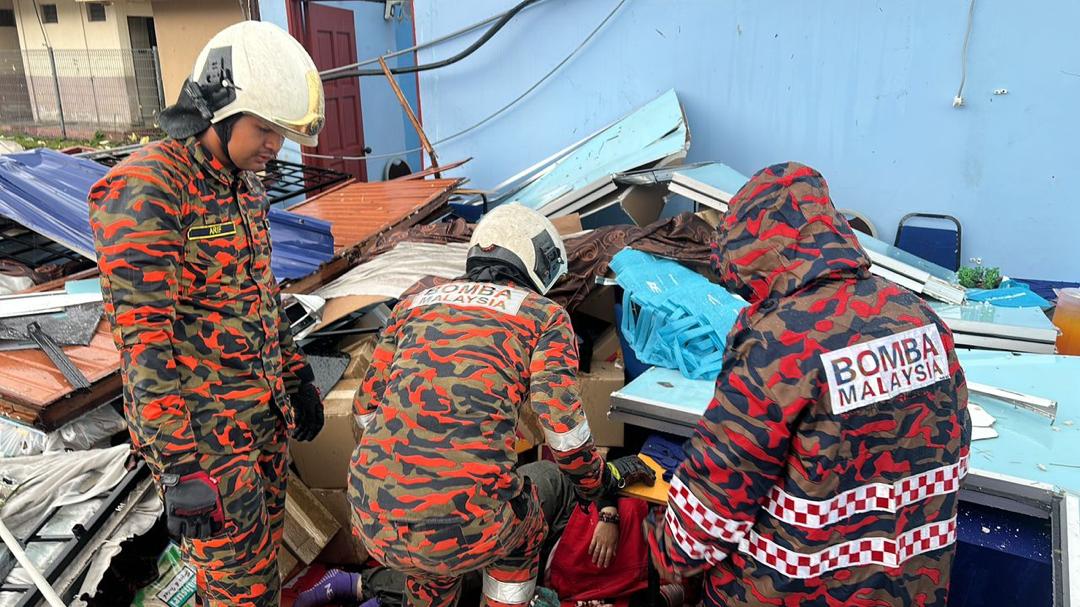KUALA LUMPUR, Oct 17 — The severe storm that struck Sijangkang, Kuala Langat, on Wednesday (October 15) was caused by the movement of a squall line that brought thunderstorms, heavy rain, and strong winds over a short period.
Universiti Putra Malaysia's Forestry and Environment Faculty senior lecturer Zulfa Hanan Ash’aari said the west coast areas of Peninsular Malaysia, such as Selangor, are more exposed to squall lines that form over the Straits of Melaka, making areas like Sijangkang prone to severe storms from time to time.
“This kind of storm does not occur daily, but it is not unusual in Malaysia, especially during the monsoon transition phase. In recent years, there have been several reports of severe storms or small-scale tornadoes in Kedah, Perak, Selangor, and Negeri Sembilan,” she told Bernama.
During Wednesday’s evening storm and heavy rain, a 51-year-old woman was injured after being trapped under the collapsed roof of Dewan Wawasan Kampung Medan, which also houses the Sijangkang state constituency coordinator’s office.
Five schools, a hall, and 40 houses were also reported damaged, while at least seven students sustained minor injuries.
Zulfa added that storms typically occur when hot, humid air rises rapidly, forming cumulonimbus clouds that often produce lightning, thunder, heavy rain, and strong winds that can disrupt daily activities and pose safety risks.
Under certain conditions, wind shear — a phenomenon in which wind blows in different directions and speeds across varying atmospheric layers — can intensify thunderstorms and sometimes lead to air vortices.
“This condition can result in a tornado or landspout if the vortex is strong enough and extends from the cloud to the ground,” she said.
Meanwhile, Universiti Kebangsaan Malaysia’s hydrology and flood modelling expert Prof Mohd Ekhwan Toriman said severe storms accompanied by tornadoes are rare in Malaysia, as such formations are localised and difficult to detect using weather satellites.
“However, there have been several recorded incidents. For example, on January 30, 2022, at about 6.40pm, a tornado was reported in Taman Tasek Damai and Kampung Tawas in Ipoh, Perak,” he said.
Ekhwan noted that global climate change will alter weather and climate patterns in Malaysia, leading to rising temperatures, extreme weather events, and rising sea levels that could result in disasters.
The University of Malaya’s Department of Geography senior lecturer Sheeba Chenoli said that although early warning systems have improved considerably through the Meteorological Department's real-time alerts, mobile apps, and radar-based monitoring, significant challenges remain.
“It is not easy to forecast short-lived, localised events like funnel clouds and microbursts, which often develop too quickly for conventional warnings,” she said.
